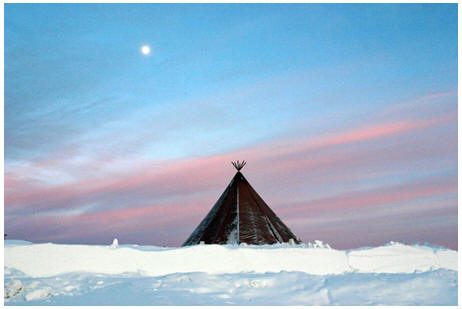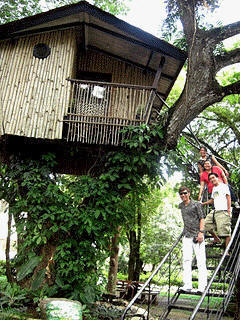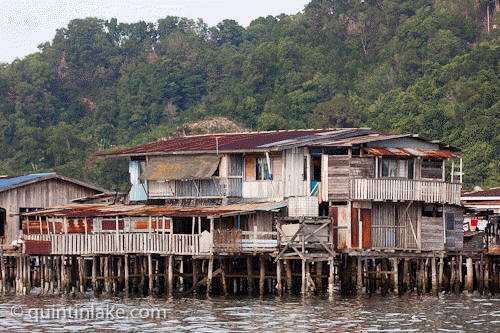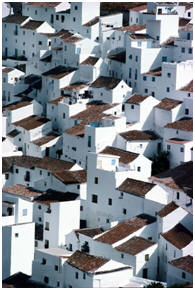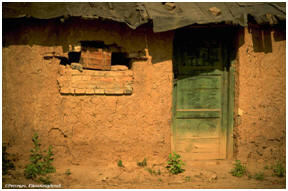L a G r a n E n c i c l o p e d i a I l u s t r a d a d e l P r o y e c t o S a l ó n H o g a r
![]()
Chapter 8: Identification!
Read the passage. Then answer questions about the passage below.
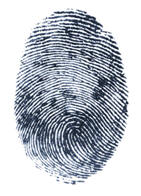
Proyecto Salón Hogar
|
If you enjoy watching crime shows on TV, you know that fingerprints play a large role in identifying people. But, you might be surprised to find out that using fingerprints for identification is not a new science. In fact, it is very old –– dating back at least as far as 1885-1913 B.C.E. In Babylon, when people agreed to a business contract, they pressed their fingerprints into the clay in which the contract was written. Thumbprints have also been found on clay seals from ancient China. In 14th century Persia, which is now Iran, a government doctor recognized that all fingerprints are different. In 1684, a British doctor, Nehemiah Grew, spoke about the ridged surfaces of the fingers. In 1686, a professor of anatomy (the study of the structure of the human body) named Marcello Malpighi, wrote about the ridges and loops in fingerprints. Malpighi’s work was considered so important that a layer of skin found on the fingertips was named after him. This layer of skin is called the Malpighian layer. Although scientists had studied fingerprints, the value of fingerprinting in the identification of individuals did not become clear until later. Sir William James Herschel is generally thought to be the first European to realize that fingerprints were unique to each person. In his work as chief magistrate in the Hoogly district in Jungipoor, India, Herschel asked people to put their handprints on contracts. Herschel believed that personal contact with the contracts made people more likely to honor their commitments, or to keep their promises. As he looked at more and more handprints, he began to see that all the handprints were different. He started to believe that fingerprints were unique, which means they are all different from each other, and permanent, which means that they do not ever change. To prove that they never change, Herschel kept track of his own fingerprints over his entire lifetime. Dr. Henry Faulds, a British surgeon at a Japanese hospital, began studying the furrows (also called ridges) on fingertips in the 1870s. He published an article in a scientific journal about the use of fingerprints as a tool in identification. He also devised, or invented, a system of classifying fingerprints. He wrote Charles Darwin about his findings, but Darwin was getting too old to work on the findings. So, he promised to pass the information to his cousin, Sir Francis Galton. Using Henry Faulds’ findings, Galton published a major book on classifying fingerprints based on arches, loops, and whorls.
|
Page 1
![]()
|
His work with Sir Edward R. Henry on fingerprint classification was the basis of a classification system which is still used by law enforcement agencies in English–speaking countries. The Federal Bureau of Investigation (FBI) now uses a variation of the Galton– Henry system. Although the use of fingerprinting in identification originated in Britain, it has been developed in the United States. In 1924, two large fingerprint collections were combined to form the foundation of the Identification Division of the FBI. Within the Identification Division, the Integrated Automated Fingerprint Identification Systems (IAFIS) can search and find fingerprints anywhere in the United States within thirty minutes.
The IAFIS can compare results with automated fingerprint systems in countries around the world. The IAFIS has the fingerprints of more than 250 million people on file. About one in six Americans has fingerprints on file with the FBI. But not all the fingerprints are related to criminal investigations. People need to have their fingerprints taken for many other reasons. People have their fingerprints taken for employment, licenses, and adoption. For example, when people want to work for the government in classified, secret jobs, their fingerprints are checked to be sure they do not have a criminal background. When prospective parents adopt a child, their fingerprints are matched against those of all criminals for the safety of the child.
|
Page 2
![]()
|
Questions
1) How were fingerprints used in ancient times? A. To seal contracts B. To sign agreements C. To identify criminals D. All of the above E. Both A and B are correct.
2) Who wrote about fingerprints in 1686? A. Henry Faulds B. Charles Darwin C. Nehemiah Grew D. Marcello Malpighi E. William James Hershel
3) Why did Sir William James Herschel ask people to put their handprints on contracts? A. He wanted to be able to better identify criminals. B. The people were not able to write. C. He wanted people to keep their promises. D. He wanted to follow the local customs. E. This was required by the intelligence agency that he was a member of.
4) How long does it take the IAFIS to find someone’s fingerprints? A. 30 seconds B. 30 minutes C. 30 hours D. 30 days E. None of the above
5) Why would a non–criminal have their fingerprints taken? A. To adopt a child B. To get some jobs C. To get certain licenses D. To identify themselves E. All of the above
|
Page 3
![]()
|
Vocabulary A. surgery. B. criminals. C. the body. D. fingerprints. E. identification.
A. uniform. B. honorable. C. singular. D. similar. E. Both C and D are correct.
B. automated. C. unchanging. D. unimportant. E. unreasonable.
B. came around. C. came up with. D. came through. E. came down with.
|
|||||
|
Page 4
Page 5
|
|||||
|
C. Mark the information you would find
in a thesaurus. __ 2. tables with lots of columns and rows __ 3. synonyms __ 4. poems and riddles __ 5. antonyms __ 6. essays
__ 1. programs, games, texts, images, music, and videos __ 2. public catalogs and libraries __ 3. food __ 4. radio and television programs __ 5. solutions to every problem __ 6. the secrets of life E. Find the pronouns in each of the following sentences. Copy the pronouns on the lines below, indicating whether they are subject pronouns (S), object pronouns (O), or possessive pronouns (P). 1. While they were watching it, their television exploded. It was quite a shock! __________________________________________________________________________________________ 2. My brother plays with his dog everyday. They both enjoy it very much! __________________________________________________________________________________________ 3. I have to run to catch my bus. If I don't, I'll miss it! __________________________________________________________________________________________ 4. Squash and carrots are her favorite vegetables. She could eat them with each meal. __________________________________________________________________________________________ 5. "Ours is the highest tower in our country," they boasted. __________________________________________________________________________________________ 6. They were best friends. They shared their books, toys, and their video games.
__________________________________________________________________________________________
F. Fill in the cluster of ideas about family.
|
|||||
|
Page 6
|
|||||
|
|
Houses Around the World
Do
you live in a house? You might be surprised to learn that there
are many, many kinds of houses. Most people in the United States
are used to houses made of wood or bricks. But many people
around the world live in houses made of grass, dirt, or cloth.
During the winter, the houses
stay warm. During the summer, the houses stay cool. In Sana’a,
Yemen, some people live in tall houses made of bricks.
These bricks are made of clay, straw, and soil. The bricks last many years –– maybe as long as 500 years. The modern houses in Sana’a are made to look like the older, traditional houses, but they are made of concrete instead of bricks. |
||||
| Page 7
|
|||||
|
|
In Mindanao in the Philippines, some people still live in tree houses. The tree houses are made of bamboo with grass roofs. The houses are good lookouts for snakes and wild animals. The air is cool and the houses stay dry. Now, most people use these tree houses as meeting places.
The fishermen of Sabah, Malaysia build their houses on the water. They use wood from mangrove trees. This wood stays strong in the water.
Two poles in the center of the house hold the
house up. The people move often to find food for their animals.
The houses are easy to move and set up. Some American Indians
live in teepees.
These homes are made of cloth or buffalo hide. There are wooden poles used to hold the teepee up. Now some people use teepees only for special ceremonies, but people used to live in them all the time. The traditional houses of Chitos, Greece, are made of stone. They have arched doorways and indoor courtyards. They have outdoor dining rooms which are decorated with tile and rock. This means they are ornamented, and made to look more beautiful. The Dayak people of Indonesia build some of their houses on stilts, several feet above the ground. The frame of the house is made of iron. The walls are made of tree bark. The floors are made of wooden planks which are placed side by side. The houses are decorated with pictures of water snakes and rhinoceros birds. These animals are part of the people’s story of creation, or how the world was made. People build their houses to fit the needs of their lives. The houses are different,
but one thing is the same wherever you go. There’s no place like
home! |
||||
| Page 8
|
|||||
|
|
Questions
B. They are both made of reeds. C. They are both made of
soil. D. They are both built on land. E. They are both very
modern. 2) Why did people live in tree houses? B. So they could stay cool. C. So they could stay safe. D. All of the above. E. None of the above. 3) Which groups have cloth houses? B. The Dayak and the Greek people. C. Mongolians and American Indians. D. Andalusians and the Dayak people. E. The Greek and the
Malaysian people. 4) Where do houses have outdoor rooms? B. In Malaysia. C. In Indonesia. D. In the Philippines. E. In the Gobi Desert. |
||||
| Page 9
|
|||||
|
5) Why are Dayak houses decorated with
pictures of snakes?? B. The snake pictures scare away other animals. C. The snakes are part of the Dayak creation story. D. Both B and C are correct. E. None of the above Vocabulary 1) Nomads are people who… B. move from place to place. C. build their homes of stone. D. live in underground houses. E. build their homes on the
water. 2) Traditional houses are houses that
have been built… B. of clay, straw, and soil. C. the same way for a long time. D. with the dining rooms outdoors. E. with decorations of tile
and rock. 3) What is another word for soil? B. Dirt C. Cloth D. Brick E. Concrete 4) When something is decorated, it is… B. made stronger. C. made to look more beautiful. D. made to look more frightening. E. None of the above.
|
|||||
|
Page 10
|
|||||


 1) Anatomy is the study of…
1) Anatomy is the study of…
